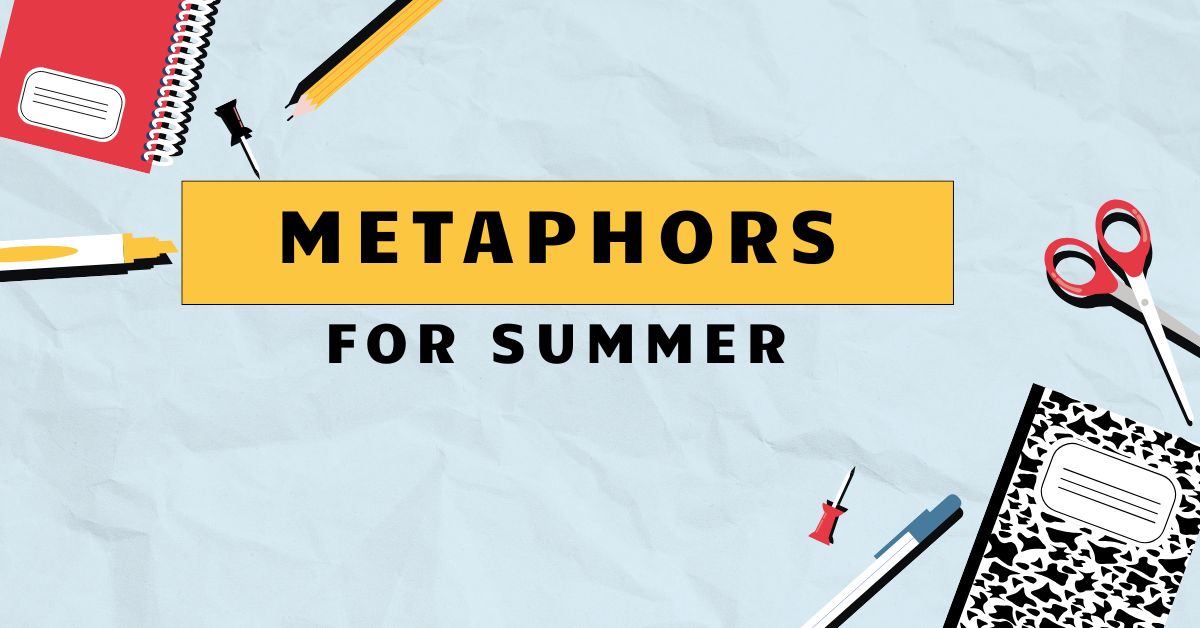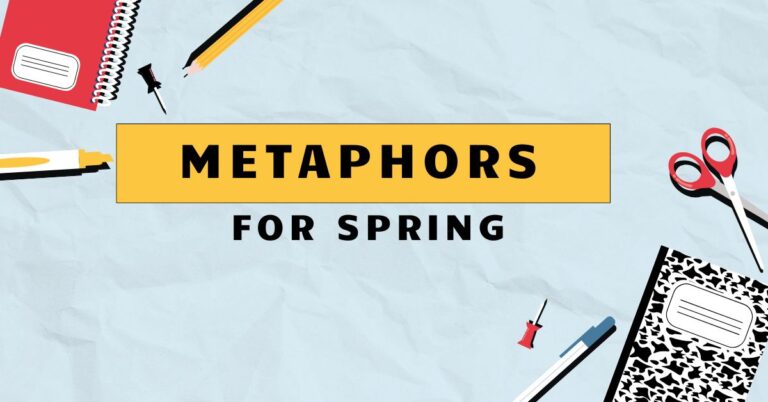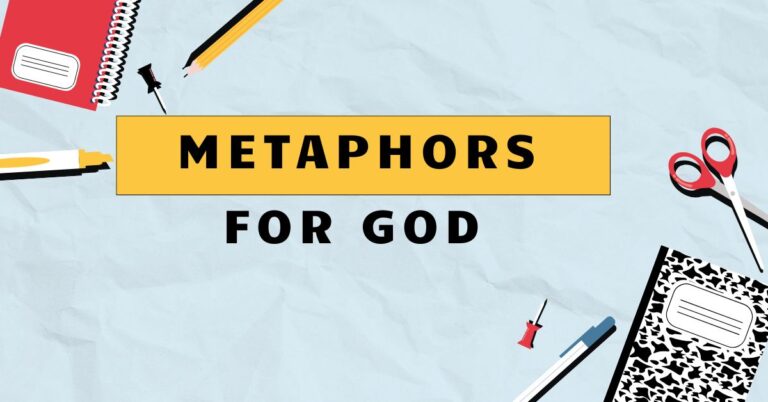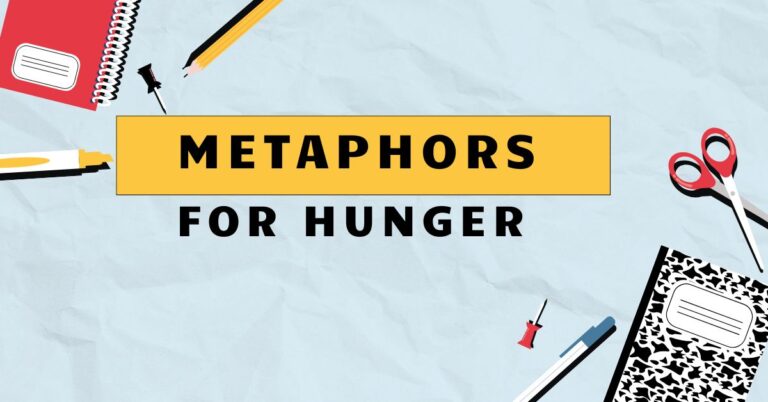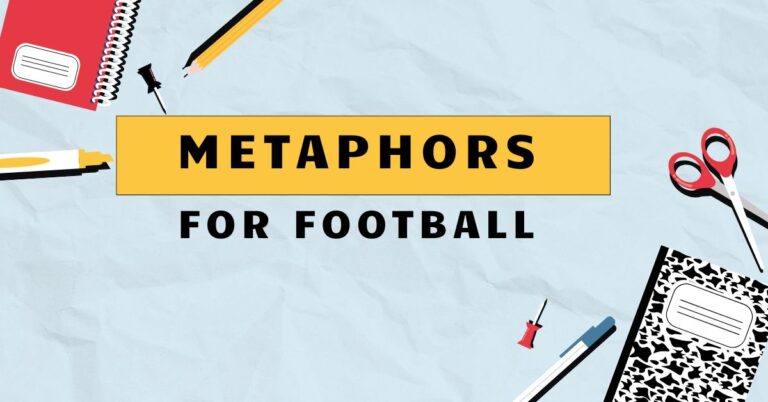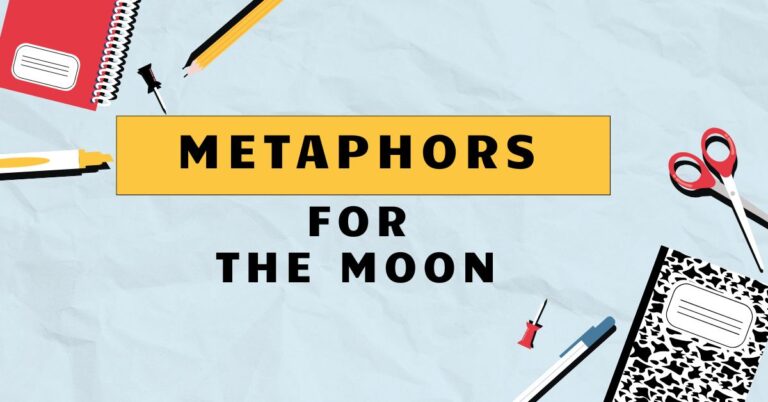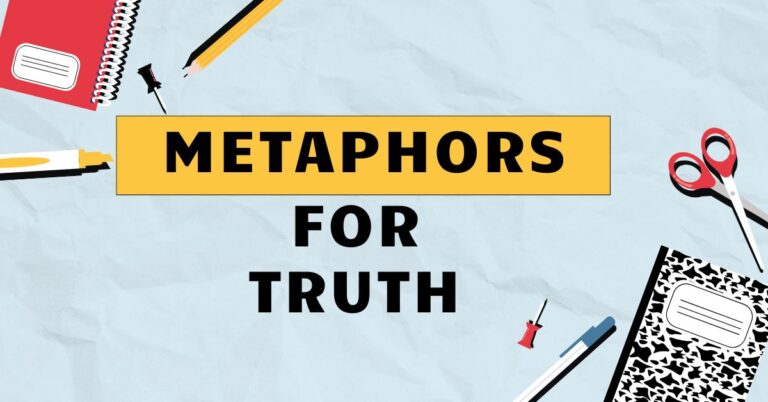37 Summer Metaphors: A Comprehensive Guide to Figurative Language
Summer, with its vibrant colors, intense heat, and long days, is a season ripe for metaphorical expression. Understanding how metaphors are used to describe summer not only enhances our appreciation of language but also deepens our connection to this special time of year.
This guide explores the diverse ways summer is portrayed through metaphor, providing a detailed analysis of its structural elements, types, and usage. Whether you’re a student, writer, or language enthusiast, this article will equip you with the knowledge to identify, interpret, and create compelling summer metaphors.
By mastering the art of summer metaphors, you’ll gain a valuable tool for enriching your writing, understanding poetry, and engaging in more nuanced communication. This article is designed to be accessible to learners of all levels, breaking down complex concepts into easy-to-understand explanations and providing ample examples to illustrate each point.
Dive in and discover the beauty and power of summer metaphors!
Table of Contents
- Definition of Metaphor
- Structural Breakdown of Summer Metaphors
- Types of Summer Metaphors
- Examples of Summer Metaphors
- Usage Rules for Summer Metaphors
- Common Mistakes with Summer Metaphors
- Practice Exercises
- Advanced Topics in Summer Metaphors
- FAQ: Summer Metaphors
- Conclusion
Definition of Metaphor
A metaphor is a figure of speech that directly compares two unlike things without using “like” or “as.” It asserts that one thingisanother, creating a vivid and often surprising connection. Metaphors are essential tools in language, allowing us to express abstract ideas, evoke emotions, and create imaginative imagery.
Unlike similes, which use explicit comparison, metaphors imply a deeper, more symbolic relationship.
In the context of summer, metaphors can transform our understanding of the season. Instead of simply describing summer’s characteristics, metaphors allow us to experience summer in new and profound ways.
For example, saying “Summer is a golden dream” evokes a sense of warmth, beauty, and fleeting happiness associated with the season.
Metaphors serve several key functions. They enhance descriptive writing by providing fresh and engaging perspectives.
They simplify complex concepts by relating them to familiar experiences. They evoke emotions by tapping into the symbolic associations of the compared objects or ideas.
They also add depth and layers of meaning to language, inviting readers to interpret and engage with the text on a deeper level. In essence, metaphors are the building blocks of creative expression, enabling us to see the world through a new lens.
Structural Breakdown of Summer Metaphors
Understanding the structure of a metaphor is crucial for both interpreting existing metaphors and creating new ones. A typical metaphor consists of two main elements: thetenor(the subject being described) and thevehicle(the object or idea used to describe the subject).
The connection between the tenor and the vehicle is theground, which represents the shared characteristics or qualities that justify the comparison.
In the summer metaphor “Summer is a furnace,” the tenor is “Summer,” the vehicle is “furnace,” and the ground is the intense heat. This metaphor works because both summer and a furnace are associated with high temperatures.
Breaking down the metaphor in this way helps us understand its meaning and appreciate its effectiveness.
Effective summer metaphors often rely on sensory details and emotional associations. The vehicle should evoke vivid images and feelings that resonate with the tenor.
For example, “Summer is a symphony of cicadas” uses the auditory image of a symphony to capture the overwhelming sound of cicadas during the summer months. The emotional association of a symphony with beauty and complexity further enhances the metaphor’s impact.
Consider the following breakdown:
| Element | Description | Example: “Summer is a green ocean” |
|---|---|---|
| Tenor | The subject being described | Summer |
| Vehicle | The object or idea used for comparison | Green Ocean |
| Ground | Shared characteristics | Vastness, abundance, life |
By analyzing the tenor, vehicle, and ground of a metaphor, we can gain a deeper understanding of its meaning and appreciate its creative power. This structural approach is essential for both interpreting and creating effective summer metaphors.
Types of Summer Metaphors
Summer metaphors can be categorized based on the aspects of summer they emphasize. These categories include weather metaphors, nature metaphors, feeling metaphors, and activity metaphors.
Each type offers a unique perspective on the season, highlighting different facets of its character.
Weather Metaphors
Weather metaphors focus on the characteristic weather conditions of summer, such as heat, sunshine, and humidity. These metaphors often use vivid imagery to convey the intensity and impact of summer weather.
Examples include “Summer is a scorching kiss,” “The sun is a molten coin,” and “The air is a thick blanket.” These metaphors highlight the physical sensations associated with summer weather, creating a powerful and immersive experience for the reader.
Nature Metaphors
Nature metaphors draw on the natural elements associated with summer, such as flowers, trees, and animals. These metaphors often celebrate the abundance and vibrancy of summer’s natural world.
Examples include “Summer is a garden in full bloom,” “The trees are emerald giants,” and “The crickets are the season’s orchestra.” These metaphors evoke a sense of beauty, growth, and vitality, capturing the essence of summer’s natural splendor.
Feeling Metaphors
Feeling metaphors explore the emotions and experiences associated with summer, such as joy, relaxation, and nostalgia. These metaphors often use abstract concepts to convey the subjective experience of summer.
Examples include “Summer is a carefree laugh,” “Vacation is a sweet escape,” and “Childhood summers are golden memories.” These metaphors resonate with our personal associations with summer, creating a sense of emotional connection and understanding.
Activity Metaphors
Activity metaphors focus on the activities and events that are characteristic of summer, such as swimming, picnics, and vacations. These metaphors often highlight the fun, freedom, and adventure associated with summer activities.
Examples include “Summer is a playground of possibilities,” “A beach day is a salty hug,” and “Camping is a starlit dream.” These metaphors capture the spirit of summer’s active and engaging lifestyle.
Examples of Summer Metaphors
To further illustrate the concept of summer metaphors, here are several examples categorized by type. These examples provide a diverse range of metaphorical expressions, showcasing the versatility and creativity of language.
Weather-Related Metaphors
The following table provides examples of weather-related metaphors for summer. These metaphors focus on the heat, sunshine, and other weather conditions that define the season.
Examining these examples will help you understand how to effectively use weather imagery to create vivid and impactful descriptions of summer.
| Metaphor | Explanation |
|---|---|
| Summer is a furnace. | Compares summer’s intense heat to a furnace. |
| The sun is a molten coin in the sky. | Describes the sun as hot and valuable. |
| The air is a thick, humid blanket. | Conveys the heavy, oppressive feeling of summer humidity. |
| Summer is a fiery dragon’s breath. | Emphasizes the scorching heat of the summer season. |
| The heat is a tangible weight on the shoulders. | Illustrates the physical burden of summer heat. |
| The sun’s rays are golden daggers piercing the clouds. | Depicts the sharp, intense sunlight. |
| The summer breeze is a gentle whisper against your skin. | Describes the light and soft touch of the summer wind. |
| The afternoon sun is a lazy eye watching over the town. | Portrays the sun as a watchful, yet relaxed presence. |
| A summer storm is a furious tantrum of the sky. | Captures the intense and dramatic nature of summer storms. |
| The humidity is a sticky embrace you can’t escape. | Illustrates the clinging and inescapable feeling of humid weather. |
| Summer is a sweat-soaked shirt clinging to your back. | Emphasizes the discomfort and stickiness of summer heat. |
| The sun is an relentless spotlight, never dimming. | Portrays the sun as constant and unforgiving. |
| Summer rain is liquid silver washing the city clean. | Describes the cleansing and refreshing quality of summer rain. |
| The heat waves are invisible dancers on the asphalt. | Illustrates the shimmering effect of heat rising from the ground. |
| The sun is a painter, splashing gold on everything it touches. | Depicts the sun as transforming the landscape with its light. |
| Summer is a sauna, wrapping the world in warmth. | Compares the summer heat to the enclosed warmth of a sauna. |
| The clouds are cotton ships sailing across a blue sea. | Describes the clouds as soft and buoyant against the sky. |
| The sky is a canvas ablaze with the sunset’s fiery hues. | Portrays the sunset as an artistic display of color. |
| Summer nights are velvet curtains draped across the world. | Illustrates the soft, dark quality of summer nights. |
| The sun is a persistent drummer, beating down on the earth. | Emphasizes the constant and rhythmic intensity of the sun. |
| The summer day is a long, hot sigh. | Captures the feeling of a drawn-out, intense summer day. |
| Heat is an invisible fist, pressing down on the city. | Shows the oppressive, heavy feeling of summer heat. |
| The sun’s glare is a blinding spotlight. | Illustrates the intensity and brightness of the sun. |
Nature-Related Metaphors
The table below contains nature-related metaphors for summer, focusing on elements like flowers, trees, and animals. These examples showcase how nature imagery can be used to create vivid and evocative descriptions of the summer season.
| Metaphor | Explanation |
|---|---|
| Summer is a garden in full bloom. | Compares summer to a flourishing garden. |
| The trees are emerald giants guarding the land. | Describes trees as majestic and protective. |
| The crickets are the season’s orchestra, chirping through the night. | Portrays crickets as musical performers. |
| Summer is a symphony of buzzing bees and blooming flowers. | Captures the harmonious and vibrant essence of summer nature. |
| The forest is a green cathedral, filled with sunlight. | Illustrates the awe-inspiring and sacred nature of the forest. |
| Fireflies are stars fallen to earth. | Depicts fireflies as magical and celestial. |
| The ocean is a turquoise dream stretching to the horizon. | Portrays the ocean as beautiful and serene. |
| The grass is an emerald carpet, soft beneath your feet. | Describes the grass as luxurious and inviting. |
| Butterflies are flying jewels, dancing in the sunlight. | Portrays butterflies as precious and graceful. |
| The river is a silver ribbon winding through the landscape. | Illustrates the river as elegant and flowing. |
| The sunflowers are golden faces turned to the sun. | Depicts sunflowers as cheerful and radiant. |
| The birdsong is a sweet melody filling the air. | Portrays birdsong as pleasant and harmonious. |
| The forest floor is a mosaic of leaves and shadows. | Illustrates the intricate and varied patterns of the forest floor. |
| The mountains are sleeping giants watching over the valley. | Depicts the mountains as powerful and protective. |
| The wildflowers are splashes of color on a green canvas. | Portrays wildflowers as vibrant and artistic. |
| The lake is a mirror reflecting the sky’s endless blue. | Illustrates the reflective and serene nature of the lake. |
| The cicadas are the summer’s loud heartbeat. | Portrays cicadas as the rhythmic pulse of the season. |
| The trees are green umbrellas, offering shade from the sun. | Depicts trees as protective and sheltering. |
| The stars are diamonds scattered across the night sky. | Illustrates the stars as precious and sparkling. |
| The moon is a pearl hanging in the velvet sky. | Portrays the moon as elegant and luminous. |
| Summer rain is nature’s gentle tears. | Depicts summer rain as cleansing and emotional. |
| The forest is a whispering library of ancient secrets. | Illustrates the mysterious and knowledgeable nature of the forest. |
| Bees are busy messengers, flitting from flower to flower. | Portrays bees as active and communicative. |
Feeling-Related Metaphors
The following table presents examples of feeling-related metaphors for summer. These metaphors explore the emotions, experiences, and subjective sensations associated with the summer season.
| Metaphor | Explanation |
|---|---|
| Summer is a carefree laugh. | Compares summer to a joyful and lighthearted feeling. |
| Vacation is a sweet escape from reality. | Describes vacation as a pleasant and temporary departure. |
| Childhood summers are golden memories. | Portrays childhood summers as precious and nostalgic. |
| Summer is a time capsule filled with sunshine and laughter. | Captures the essence of summer as a repository of happy moments. |
| Relaxation is a soft blanket on a warm day. | Illustrates the comforting and soothing sensation of relaxation. |
| Freedom is an open road stretching to the horizon. | Depicts freedom as vast and limitless. |
| Nostalgia is a faded photograph of past summers. | Portrays nostalgia as a wistful recollection of earlier times. |
| Happiness is a popsicle melting in your hand. | Describes happiness as fleeting and sweet. |
| Summer love is a whirlwind romance under the stars. | Portrays summer love as passionate and intense. |
| Adventure is a map unfolded, waiting to be explored. | Illustrates adventure as exciting and full of possibilities. |
| Peace is a hammock swaying gently in the breeze. | Depicts peace as calm and serene. |
| Joy is a burst of fireworks on the Fourth of July. | Portrays joy as explosive and celebratory. |
| Contentment is a glass of lemonade on a hot afternoon. | Illustrates contentment as simple and refreshing. |
| Summer dreams are cotton candy clouds floating in the sky. | Depicts summer dreams as sweet and whimsical. |
| Innocence is a child’s bare feet running through the grass. | Portrays innocence as pure and carefree. |
| Summer evenings are a gentle sigh of relief. | Illustrates summer evenings as calming and peaceful. |
| Warmth is a hug from the sun. | Depicts warmth as comforting and embracing. |
| Summer days are endless possibilities waiting to unfold. | Portrays summer days as full of potential and opportunity. |
| Memories are seashells collected on the beach. | Illustrates memories as precious and tangible. |
| Summer nights are whispered secrets under the stars. | Depicts summer nights as intimate and mysterious. |
| Summer is a canvas painted with laughter and light. | Shows summer as full of joy and brightness. |
| A vacation is a reset button for the soul. | Illustrates vacation as refreshing and restorative. |
| Summer evenings are a lullaby sung by the crickets. | Portrays summer evenings as soothing and peaceful. |
Activity-Related Metaphors
The following table contains activity-related metaphors for summer. These metaphors focus on the activities, events, and experiences that are characteristic of the summer season.
| Metaphor | Explanation |
|---|---|
| Summer is a playground of possibilities. | Compares summer to a place where anything is possible. |
| A beach day is a salty hug from the ocean. | Describes a beach day as comforting and refreshing. |
| Camping is a starlit dream under the open sky. | Portrays camping as magical and serene. |
| Summer is a carnival of outdoor adventures. | Captures the excitement and variety of summer activities. |
| Swimming is a cool embrace on a scorching day. | Illustrates swimming as refreshing and relieving. |
| A picnic is a tapestry of flavors and laughter. | Depicts a picnic as rich and joyful. |
| Barbecues are feasts of smoky delight. | Portrays barbecues as delicious and festive. |
| Road trips are adventures etched in asphalt. | Describes road trips as memorable and exciting. |
| Summer concerts are symphonies under the stars. | Portrays summer concerts as beautiful and harmonious. |
| Fireworks are bursts of joy lighting up the night. | Illustrates fireworks as celebratory and spectacular. |
| Gardening is a dance with nature’s rhythm. | Depicts gardening as harmonious and fulfilling. |
| Hiking is a journey through nature’s cathedral. | Portrays hiking as spiritual and awe-inspiring. |
| Biking is a ride on the wings of the wind. | Illustrates biking as exhilarating and freeing. |
| Fishing is a patient conversation with the sea. | Depicts fishing as peaceful and contemplative. |
| Sunbathing is a warm embrace from the sun. | Portrays sunbathing as comforting and soothing. |
| Stargazing is a journey through the universe’s mysteries. | Illustrates stargazing as awe-inspiring and profound. |
| Berry picking is a treasure hunt in the fields. | Depicts berry picking as fun and rewarding. |
| Summer festivals are celebrations of community spirit. | Portrays summer festivals as lively and uniting. |
| Water balloon fights are playful battles under the sun. | Illustrates water balloon fights as fun and energetic. |
| Campfires are circles of stories and warmth. | Depicts campfires as comforting and communal. |
| Summer nights are drive-in movies under a blanket of stars. | Shows summer nights as nostalgic and romantic. |
| A summer job is a stepping stone to independence. | Illustrates a summer job as empowering and transformative. |
| Vacation is a blank page ready to be filled with adventures. | Portrays vacation as full of potential and opportunity. |
Usage Rules for Summer Metaphors
Using summer metaphors effectively requires an understanding of certain rules and guidelines. These rules ensure that your metaphors are clear, impactful, and appropriate for the context.
Here are some key considerations:
- Clarity: Ensure that the connection between the tenor and the vehicle is clear and logical. Avoid metaphors that are too obscure or confusing. The reader should be able to easily understand the intended comparison.
- Relevance: Choose metaphors that are relevant to the overall theme and tone of your writing. A metaphor that feels out of place can disrupt the flow and detract from the message.
- Originality: Strive for originality in your metaphors. Overused metaphors can become clichés and lose their impact. Try to find fresh and creative ways to describe summer.
- Consistency: Maintain consistency in your metaphorical language. Avoid mixing metaphors that create conflicting or nonsensical images.
- Audience: Consider your audience when choosing metaphors. A metaphor that resonates with one audience may not be effective with another. Tailor your language to the specific interests and background of your readers.
For example, instead of saying “Summer is hot,” which is a literal statement, you could say “Summer is a simmering pot,” which is a more vivid and engaging metaphor. However, ensure that the image of a “simmering pot” aligns with the overall tone and context of your writing.
If you are writing a romantic poem about summer, a more appropriate metaphor might be “Summer is a lover’s warm embrace.”
Common Mistakes with Summer Metaphors
Several common mistakes can weaken the effectiveness of summer metaphors. Being aware of these pitfalls can help you avoid them and create stronger, more impactful metaphorical expressions.
One common mistake is usingmixed metaphors, where the components of the metaphor create a confusing or contradictory image. For example, “Summer is a furnace, but it’s also a gentle breeze” mixes two conflicting images, diluting the impact of both.
It’s better to stick to one consistent image or idea.
Another mistake is usingclichéd metaphors, which are overused and lack originality. Examples include “Summer is a dream” or “The sun is a ball of fire.” While these metaphors are technically correct, they lack the freshness and creativity that make metaphors truly effective.
Strive for more original and imaginative comparisons.
A third mistake is using metaphors that aretoo abstract or obscure. The connection between the tenor and the vehicle should be relatively clear and easy to understand.
If the reader has to work too hard to decipher the metaphor, it will lose its impact. Choose metaphors that are accessible and relatable.
Here are some examples of common mistakes and how to correct them:
| Incorrect | Correct | Explanation |
|---|---|---|
| Summer is a hot potato, but it’s also a cool cucumber. | Summer is a hot potato. | Avoid mixing metaphors. |
| Summer is a dream. | Summer is a golden memory. | Use fresh and original metaphors. |
| Summer is a quantum entanglement of temporal flux. | Summer is a whirlwind of activity. | Choose metaphors that are clear and accessible. |
By avoiding these common mistakes, you can create summer metaphors that are clear, original, and impactful.
Practice Exercises
Test your understanding of summer metaphors with the following exercises. These exercises will help you identify, interpret, and create effective metaphorical expressions.
Exercise 1: Identifying Summer Metaphors
Identify the metaphor in each of the following sentences and explain its meaning.
| Question | Answer |
|---|---|
| 1. The summer sun was a spotlight, highlighting every detail of the landscape. | Metaphor: The summer sun was a spotlight. Meaning: The sun was intense and focused, emphasizing the visibility of everything. |
| 2. Her laughter was a summer breeze, light and refreshing. | Metaphor: Her laughter was a summer breeze. Meaning: Her laughter was pleasant and invigorating. |
| 3. The city was an oven in July, baking everyone in its streets. | Metaphor: The city was an oven. Meaning: The city was extremely hot. |
| 4. Summer vacation is a pause button on reality. | Metaphor: Summer vacation is a pause button. Meaning: Summer vacation is a break from the normal routine. |
| 5. The crickets’ chirping was the soundtrack of summer nights. | Metaphor: The crickets’ chirping was the soundtrack. Meaning: The crickets’ chirping was a defining sound of summer. |
| 6. The lake was a mirror, reflecting the sky’s vast expanse. | Metaphor: The lake was a mirror. Meaning: The lake reflected the sky perfectly. |
| 7. Summer storms were nature’s temper tantrums. | Metaphor: Summer storms were nature’s temper tantrums. Meaning: Summer storms were intense and unpredictable. |
| 8. The fireflies were dancing stars in the twilight. | Metaphor: The fireflies were dancing stars. Meaning: The fireflies were magical and luminous. |
| 9. The beach was a playground for the soul. | Metaphor: The beach was a playground. Meaning: The beach was a place for relaxation and enjoyment. |
| 10. The summer heat was a heavy blanket, stifling all activity. | Metaphor: The summer heat was a heavy blanket. Meaning: The summer heat was oppressive and overwhelming. |
Exercise 2: Creating Summer Metaphors
Complete the following sentences by adding an appropriate summer metaphor.
| Question | Answer |
|---|---|
| 1. The summer sky was ____. | The summer sky was a canvas of endless blue. |
| 2. The heat was ____. | The heat was a tangible presence, pressing down on the city. |
| 3. Summer evenings are ____. | Summer evenings are whispered secrets under the stars. |
| 4. A summer day is ____. | A summer day is a long, lazy sigh of contentment. |
| 5. The sound of the waves was ____. | The sound of the waves was a soothing melody for the soul. |
| 6. The scent of the flowers was ____. | The scent of the flowers was a sweet perfume carried on the breeze. |
| 7. Summer memories are ____. | Summer memories are golden treasures stored in the heart. |
| 8. The feeling of summer is ____. | The feeling of summer is a warm hug from the sun. |
| 9. A summer storm is ____. | A summer storm is a dramatic performance by the sky. |
| 10. Summer is ____. | Summer is a chapter of joy in the book of life. |
Exercise 3: Rewriting Literal Statements as Metaphors
Rewrite the following literal statements as metaphors.
| Question | Answer |
|---|---|
| 1. The sun was very bright. | The sun was a blinding spotlight in the sky. |
| 2. The air was hot and humid. | The air was a thick, sticky blanket. |
| 3. The children were playing happily. | The children were bursts of joy, running through the park. |
| 4. The vacation was relaxing. | The vacation was a soothing balm for the weary soul. |
| 5. The crickets were loud. | The crickets were the summer’s noisy orchestra. |
| 6. The flowers were colorful. | The flowers were splashes of vibrant paint on a green canvas. |
| 7. The lake was calm. | The lake was a mirror, reflecting the serene sky. |
| 8. The stars were shining. | The stars were diamonds scattered across the velvet sky. |
| 9. The breeze was gentle. | The breeze was a soft whisper against the skin. |
| 10. The summer was enjoyable. | Summer was a chapter of pure delight. |
Advanced Topics in Summer Metaphors
For advanced learners, exploring more complex aspects of summer metaphors can further enhance their understanding and mastery of figurative language. These topics include extended metaphors, mixed metaphors, and the cultural significance of summer metaphors.
Extended Metaphors:An extended metaphor is a metaphor that is developed over several lines or paragraphs. It allows for a more detailed and nuanced comparison, creating a richer and more immersive experience for the reader.
For example, a poem might describe summer as a “golden king” throughout the entire piece, exploring various aspects of this metaphorical comparison.
Mixed Metaphors:As mentioned earlier, mixed metaphors combine two or more incompatible metaphors, creating a confusing or nonsensical image. While typically considered a mistake, skilled writers can sometimes use mixed metaphors intentionally for humorous or ironic effect.
However, this requires a careful understanding of language and a clear purpose.
Cultural Significance:Summer metaphors often reflect the cultural values and associations of a particular society. For example, in some cultures, summer may be associated with abundance and fertility, while in others, it may be associated with leisure and relaxation.
Understanding these cultural nuances can deepen your appreciation of summer metaphors and their significance.
FAQ: Summer Metaphors
Here are some frequently asked questions about summer metaphors:
- What is the difference between a metaphor and a simile?
A metaphor directly compares two unlike things without using “like” or “as,” while a simile uses “like” or “as” to make the comparison explicit. For example, “Summer is a furnace” is a metaphor, while “Summer is like a furnace” is a simile.
- Why are metaphors important in writing?
Metaphors enhance descriptive writing, simplify complex concepts, evoke emotions, and add depth and layers of meaning to language. They allow writers to express ideas in a more vivid and engaging way.
- How can I create effective summer metaphors?
To create effective summer metaphors, focus on clarity, relevance, originality, and consistency. Choose metaphors that are easy to understand, appropriate for the context, fresh and creative, and consistent with the overall tone of your writing.
- What are some common types of summer metaphors?
Common types of summer metaphors include weather metaphors, nature metaphors, feeling metaphors, and activity metaphors. Each type emphasizes different aspects of the summer season.
- What are some common mistakes to avoid when using summer metaphors?
Common mistakes include using mixed metaphors, clichéd metaphors, and metaphors that are too abstract or obscure. Avoid these pitfalls to create stronger, more impactful metaphorical expressions.
- How do I avoid using clichéd summer metaphors
To avoid using clichéd summer metaphors, brainstorm unique and specific aspects of summer that resonate with you. Think about sensory details (sights, sounds, smells, tastes, textures) and emotional associations that are personal and evocative. Try to create comparisons that are fresh and unexpected, moving beyond the typical “sun is hot” or “summer is fun” tropes. The more specific and personal your observations, the more original your metaphors will be.
Conclusion
Summer metaphors offer a rich and diverse way to express the essence of the season. By understanding the structure, types, and usage rules of summer metaphors, you can enhance your writing, deepen your appreciation of language, and connect with the world around you in new and meaningful ways.
Whether you are describing the intense heat of a summer day, the vibrant beauty of a summer garden, or the carefree joy of a summer vacation, metaphors provide a powerful tool for capturing the unique qualities of this special time of year. Embrace the creativity and imagination that metaphors unlock, and let your language bloom with the warmth and vitality of summer.

